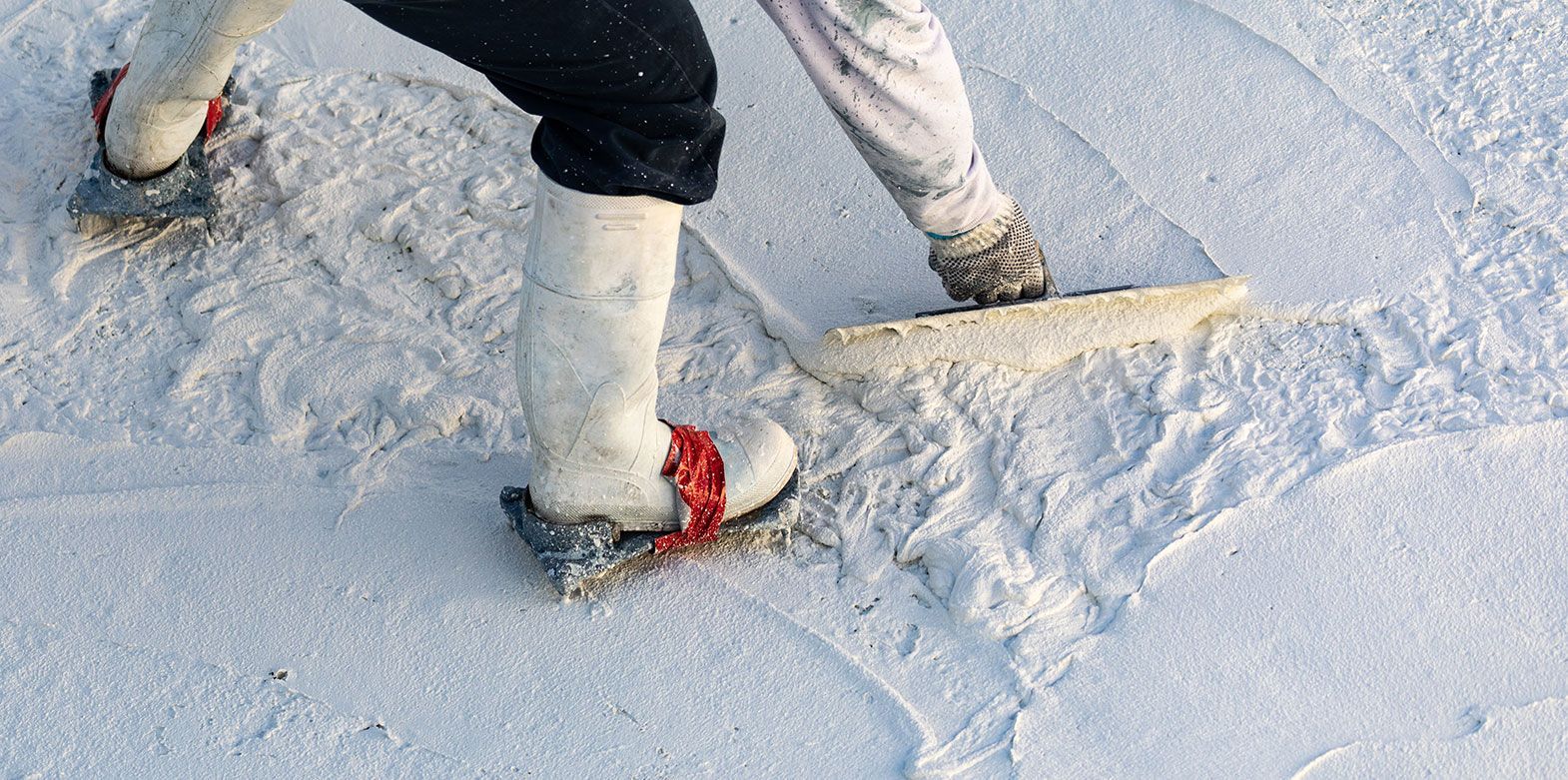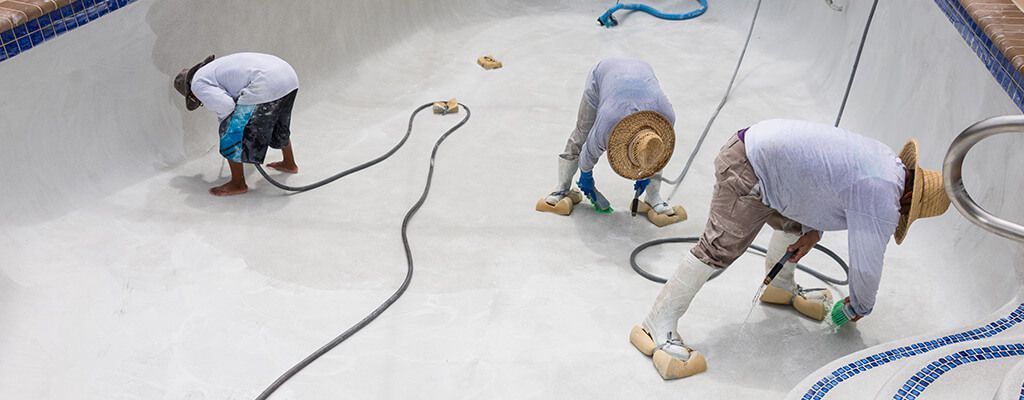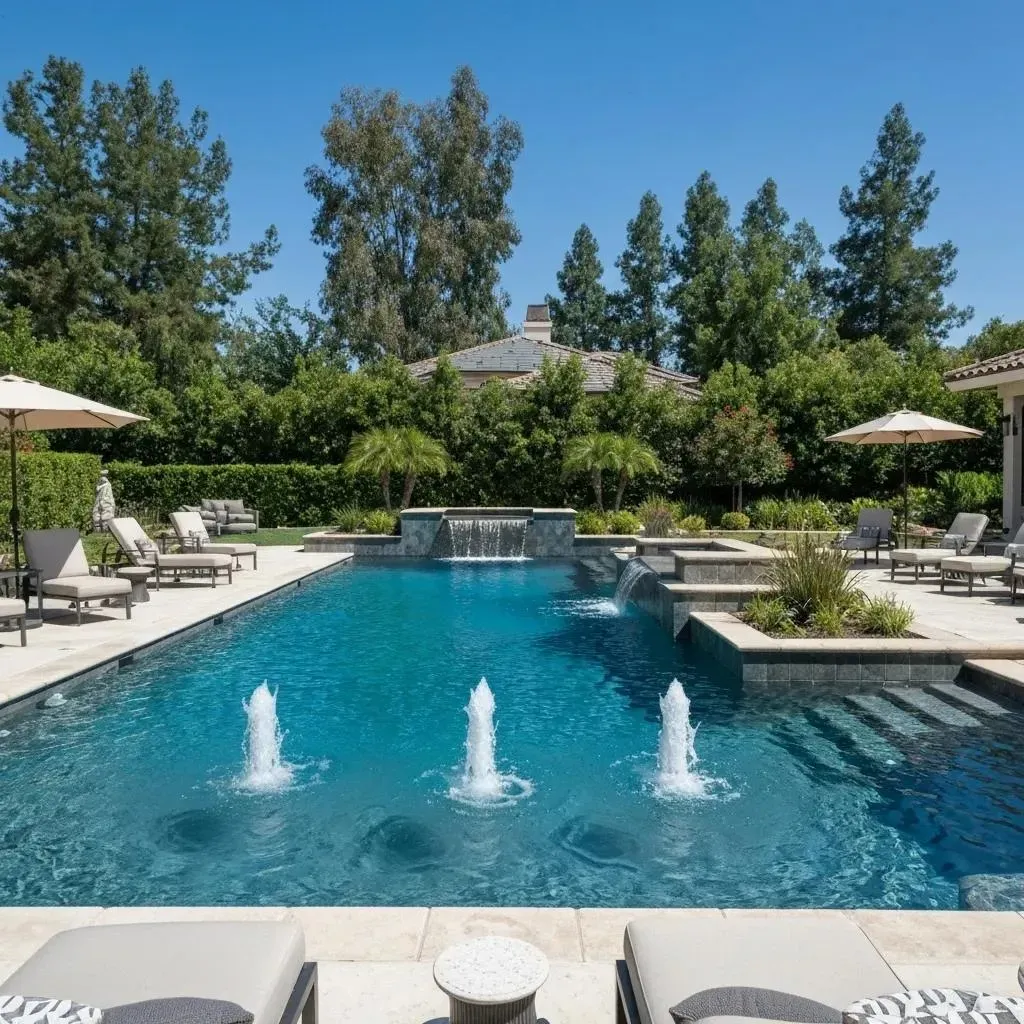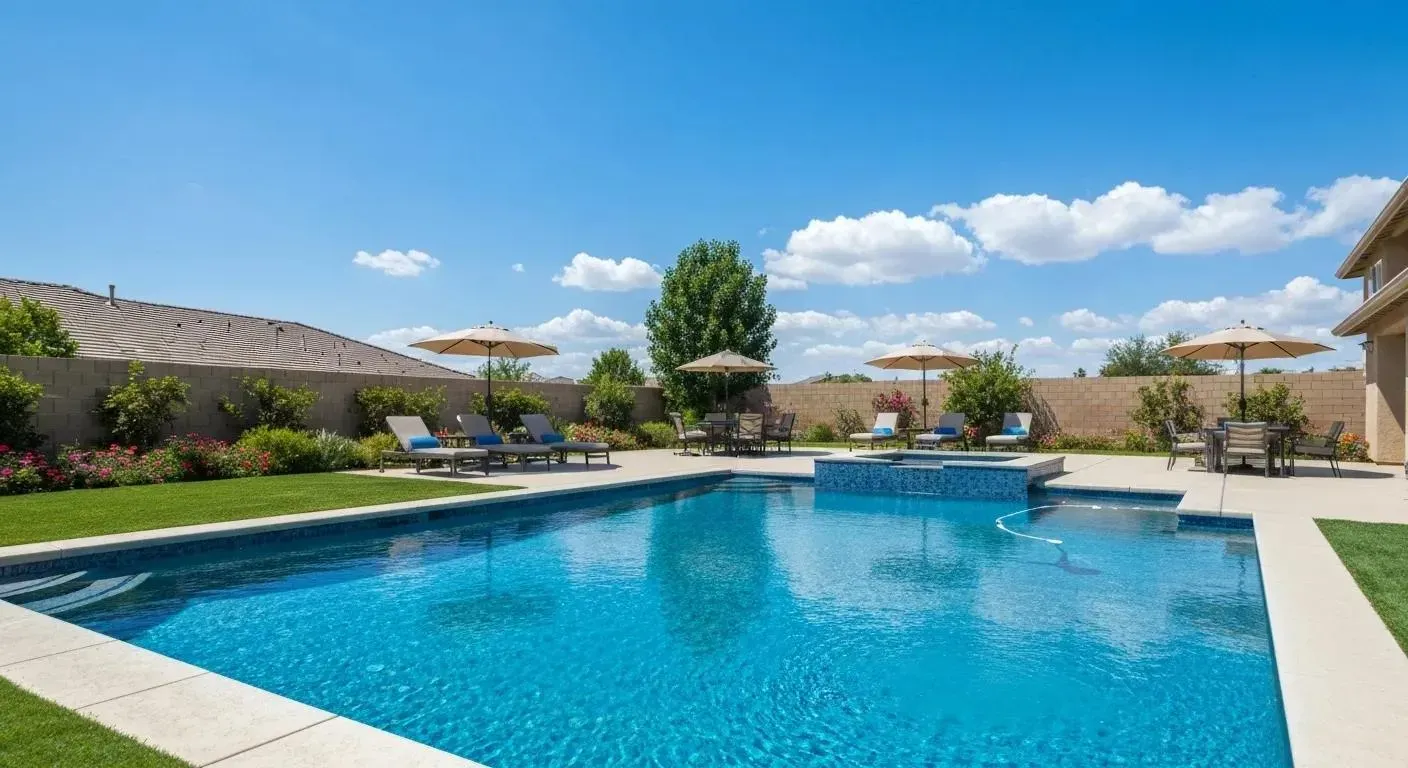
WHEN TO REPLASTER YOUR POOL FOR LONG-LASTING DURABILITY
Overview
Your pool should be the highlight of your backyard, a place to cool off, relax, and entertain. However, swimming can be less enjoyable and even uncomfortable if the surface starts showing cracks, stains, or rough patches.
Pool plaster naturally wears down over time, and knowing when to replaster can save you from bigger, more expensive repairs later. In this post, Pool Tek will break down the telltale signs that it’s time for resurfacing, why it’s worth the investment, and what the process looks like from start to finish.
Pool Plaster Basics: Wear Signs and When to Replaster
- How long does pool plaster last?
- Types of pool plasters
- Causes of pool plaster problems
- When to replaster a pool
- Benefits of replastering your pool
- What happens if you don’t replaster your pool?
- Maintaining your pool plaster
Introduction
Are you noticing your pool looking a little worse for wear? If the surface feels rough, looks discolored, or has cracks forming, it might be time to replaster. Pool plaster doesn’t last forever, and factors like chemicals, weather, and daily use slowly take their toll.
If you notice signs that your pool plaster is deteriorating and no longer providing proper protection, it may be time to replaster. Keep reading to discover Pool Tek’s top reasons for considering pool replastering and how it can improve your swimming experience and your pool’s value.
How Long Does Pool Plaster Last?
Pool plaster acts as a protective barrier over your pool’s concrete or gunite shell, preventing water from penetrating the structure while creating a smooth, comfortable surface for swimmers. On average, well-maintained plaster lasts between 7 and 15 years, though this estimate is based on manufacturer guidelines and assumes regular upkeep and proper maintenance.
Its durability comes from a blend of cement and finely crushed marble or quartz, forming a dense, water-resistant surface that adheres tightly to the pool’s structure. This strong composition reinforces the pool shell and resists constant water exposure, chemical treatments, and fluctuating temperatures, ensuring long-term protection and performance.
Types of Pool Plasters and Their Durability
Some pool plasters are significantly more durable than others due to differences in materials, composition, and resistance to chemicals and wear. While traditional white plaster is the most common and affordable option, advanced plaster finishes with additives like quartz or pebble aggregates offer greater longevity and better resistance to harsh conditions.
Below, we’ll break down the durability of different pool plaster types and what makes some last longer than others.
Standard White Plaster
Lifespan: 7-10 years
White plaster is the most common and budget-friendly pool finish, made from a mix of Portland cement and marble dust. It provides a smooth, clean look but is more prone to etching, staining, and roughness as it wears down over time. Proper water chemistry and regular maintenance can slow deterioration, but white plaster has the shortest lifespan compared to other finishes and requires more upkeep.
Quartz Plaster
Lifespan: 12-15 years
Quartz plaster is a mix of white plaster and crushed quartz, making it much stronger and more resistant to stains. The quartz particles help the surface hold up against pool chemicals, algae growth, and fading, keeping it looking fresh for longer. It’s a great option for pool owners who want something more durable than standard plaster without a major jump in cost.
Pebble Plaster
Lifespan: 15+ years
Pebble plaster mixes cement with small, smooth river pebbles for a long-lasting, textured finish. It’s highly resistant to chemicals and wear, repels algae, and requires very little maintenance. While it’s more expensive upfront, its long lifespan and durability make it a smart investment for pool owners looking for the toughest surface.
Aggregate Plaster
Lifespan: 15+ years
Polished aggregate plaster is made from crushed quartz, granite, or marble, polished to a sleek, glossy finish. It’s less porous than standard plaster, meaning fewer stains and better chemical resistance. This finish adds a high-end, luxurious look to the pool but requires professional installation and occasional polishing to maintain its shine.
What Factors Cause Pool Plaster Problems?
In addition to the plaster you install, several factors influence how long your pool’s plaster will hold up. While high-quality plaster is built to last, certain conditions can speed up the breakdown and create a rough surface sooner than expected.
Here’s what can impact its durability:
- Water chemistry: Poor water balance, including high acidity or alkalinity, can cause premature etching, scaling, and discoloration.
- Maintenance habits: Regular brushing and proper chemical balancing help extend the life of pool plaster.
- Usage frequency: Heavy pool use and rough play can cause accelerated surface deterioration.
- Plaster quality and application: The type of plaster used and the skill of the installation team play a major role in how long it lasts.
How Do You Know When To Replaster a Pool?
No matter how old your pool plaster is or the quality of the material used, it’s always a good idea to monitor its condition and address any changes in quality. If you notice any of the following signs of deterioration—whether premature or expected—it may be time to replaster your pool.
Rough and Pitted Surfaces
Running your hand along the pool walls should feel smooth, or at least not too rough, depending on your chosen initial style. If the surface feels pitted, grainy, or unusually rough, the plaster has likely eroded. This can cause discomfort and even small abrasions on swimmers’ feet.
Stubborn Stains and Discoloration
Minor staining is normal, but if your pool’s surface is covered in widespread dark, rust-colored, or greenish stains that won’t come out with scrubbing, the plaster may be too worn to clean effectively.
Cracks and Chipping
Visible cracks, chips, or hollow spots in the plaster indicate underlying structural issues. Cracks can expand and lead to leaks when left untreated and if the plaster isn't replaced.
Frequent Algae Growth
If algae keeps appearing despite proper chemical treatment, it could be due to deteriorated plaster. A rough, pitted surface provides a perfect place for algae to take hold, making maintenance more difficult.
Increased Water Absorption
Worn-down plaster allows more water to seep into the pool’s structure, leading to higher water loss. If your pool requires frequent refilling, it could be time to replaster.
What Are the Benefits of Replastering Your Pool?
You’ve invested time and money into your pool because it adds value to your home and enhances your lifestyle. It’s where you relax, cool off, and create lasting memories. But if the plaster starts deteriorating, it can diminish the beauty and functionality of your pool.
Replastering restores its surface and protects your investment in several key ways:
- Improved aesthetics
- Enhanced comfort and safety
- Better water quality
- Easier maintenance
- Protection against leaks
- Increased property value
What Happens if You Don’t Replaster Your Pool?
Once signs of deterioration or damage are detected, responding right away will help prevent secondary damage to your pool. Pool plaster isn’t just for show—it acts as a protective barrier between the water and the underlying concrete or gunite shell, so don’t leave this maintenance task on the back burner.
When plaster becomes rough, chipped, or cracked, water starts seeping through to the structural shell. This leads to erosion, weakening of the rebar reinforcement, and even concrete spalling, where chunks of the pool’s structure break away.
If left unchecked, this water intrusion can cause severe damage, including rusting of the steel framework within the pool, pressure cracks that compromise the shell's integrity, and even ground shifting due to water loss beneath the pool.
Over time, these issues escalate into major structural failures that require repairs, resurfacing, or, in extreme cases, full pool reconstruction. Replastering on time restores this critical waterproofing layer, sealing the surface against water penetration and preserving the strength and longevity of the entire pool structure.
How To Maintain Your Pool Plaster for Lasting Durability?
To extend the lifespan of your pool plaster and avoid early deterioration, follow these key maintenance steps:
Maintain Proper Water Chemistry
Keep pH, alkalinity, and calcium hardness levels balanced to prevent etching, scaling, and discoloration. Conduct periodic pool water testing and adjust chemicals as needed.
Brush and Clean Regularly
Use a soft-bristle brush to clean the pool walls and floor at least once a week. This helps prevent algae buildup and removes debris that can cause staining or rough patches.
Use the Right Pool Chemicals
Avoid harsh or excessive chemical treatments, which can weaken the plaster over time. Opt for gentler alternatives when possible, and always follow manufacturer recommendations.
Monitor for Early Signs of Damage
Address minor stains, roughness, or small cracks immediately before they worsen. Routine inspections can help catch problems early and extend the life of your pool’s surface.
Limit Draining and Refilling
Frequent draining exposes plaster to air, causing it to dry out and crack. Only drain your pool when absolutely necessary, and always follow proper procedures to protect the surface.
Restore Your Pool With Expert Replastering—Call Today!
Keeping your pool in top shape means knowing when it’s time to replaster. A fresh layer of plaster enhances durability, prevents structural issues, and keeps your pool looking and feeling its best.
Pool Tek specializes in professional pool plastering and resurfacing, providing expert solutions to restore and protect your pool. If you’ve noticed signs of wear or deterioration, call (661) 817-7909 to schedule an inspection.
latest Posts



